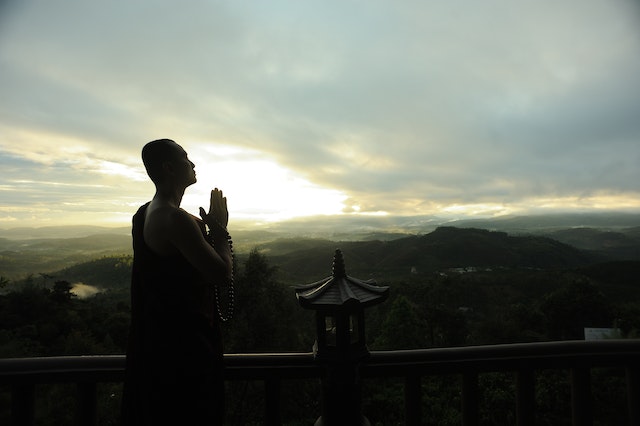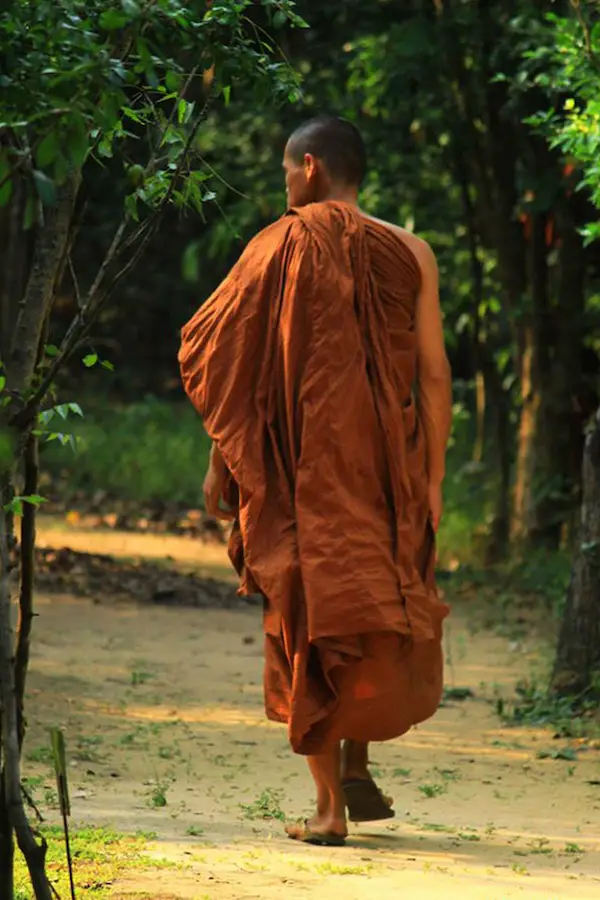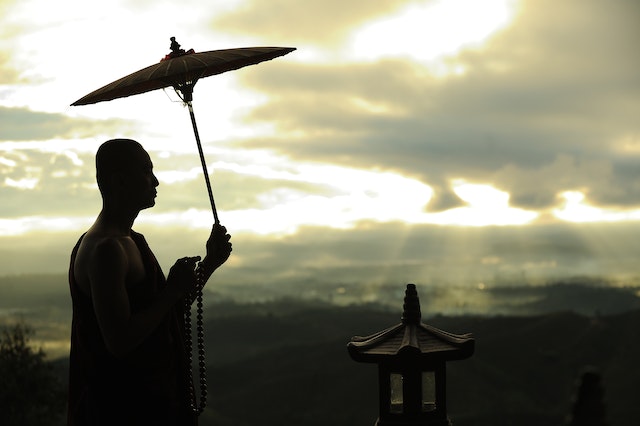
In the vast tapestry of medieval history, the lives of monks stood as a testament to unwavering devotion, simplicity, and a commitment to a higher calling.
These pious individuals, members of various monastic orders, embraced a life of seclusion, prayer, and labor within the sheltered confines of monasteries.
A glimpse into the daily life of these medieval monks unveils a structured routine that harmoniously melded devotion, labor, and intellectual pursuits.
Monastic Orders in the Medieval Era
Before delving into the daily rhythms of monastic life, it is imperative to comprehend the various monastic orders that proliferated during the medieval era.
From the venerable Benedictines to the austere Carthusians, each order brought forth its unique traditions, rules, and ethos, while adhering to the overarching principles of monasticism.
- Read also: Feudalism in Medieval Japan
- Read also: Fascinating World of Chinese Mythology Gods
The Daily Routine of Medieval Monks
The heartbeat of monastic life was the daily liturgical cycle, which punctuated the hours with prayer, contemplation, and reflection.
This divine cadence adhered to the Rule of St. Benedict, encompassing eight canonical hours that structured the day:
The first hour: Vigils
The monastic day commenced in the dim hours before dawn with Vigils.
Under the ethereal glow of candlelight, the monks gathered in the chapel for nocturnal prayers and psalms, immersing themselves in an ambiance of spiritual fervor.
The second hour: Lauds
As the first rays of dawn caressed the horizon, Lauds embraced the new day with hymns and praises.
This morning’s office celebrated the glory of God and laid the foundation for the day’s spiritual journey.
The third hour: Prime
With the sun’s ascent, the Third Hour, known as Prime, beckoned the monks to gather for another moment of communal prayer.
This hour prepared their hearts for the labor and study that lay ahead.
The fourth hour: Terce
As the day unfolded, the Fourth Hour, Terce, called the brethren together to seek divine guidance and wisdom in the midst of their daily toil.
The fifth hour: Sext
With the sun at its zenith, the Fifth Hour, Sext, provided a moment of respite from work, offering an opportunity for contemplation and rejuvenation.
The sixth hour: None
As the sun began its descent, the Sixth Hour, None, marked another interlude for reflection and prayer, kindling the monastic spirit amidst the flurry of activity.
The seventh hour: Vespers
As the evening shadows lengthened, Vespers summoned the monks to gather for the evening prayers, beseeching divine guidance and solace.
The eighth hour: Compline
Under the cloak of night, the Eighth Hour, Compline, bid the monks farewell to the day, shrouding them in prayers of protection and peace as they prepared for slumber.

The Monastic Diet and Meals
The sustenance of medieval monks, devoted to their spiritual and physical pursuits, manifested in a simple yet nourishing diet carefully tailored to meet their needs.
Each day, their fare consisted of basic staples, including freshly baked bread, wholesome vegetables, and hearty grains.
In harmony with the changing seasons, they savored the addition of ripe, succulent fruits to their meals.
While meat or fish were enjoyed in modest portions, there were also designated days of abstinence from such indulgences, fostering a sense of discipline and reverence.
Through this intentional regimen, the monks embraced a way of life that nurtured humility, simplicity, and gratitude, allowing them to find sustenance not only for their bodies but also for their souls.
Monastic Labor and Work
Beyond their spiritual devotions, medieval monks ardently engaged in labor and work, instilling the philosophy of “ora et labora” (pray and work).
These diligent efforts enriched both the monastic community and the broader medieval society. Some of their primary tasks included:
Copying manuscripts
Medieval monks served as the custodians of knowledge, laboring meticulously to copy and preserve ancient manuscripts, safeguarding the wisdom of the ages from the ravages of time.
Farming and agriculture
Monasteries were self-sufficient entities, often nestled amidst fertile lands.
Monks toiled diligently in the fields, tending to crops and engaging in agricultural pursuits to sustain the monastic community.
Brewing and beer-making
A unique facet of monastic life was brewing and beer-making, with monasteries renowned for producing exceptional ales.
This practice also provided a source of sustenance and financial support for the monastery.
Medicinal herb cultivation
The monks cultivated medicinal herbs, emerging as the custodians of medicinal knowledge, administering to the sick and infirm within and beyond the monastery walls.

Monastic Learning and Education
Within the annals of medieval history, the monasteries took center stage not only as bastions of knowledge and erudition but also as sanctuaries of enlightenment.
Enclosed within their hallowed precincts, erudite scholars and meticulous scribes ardently dedicated themselves to the sacred task of painstakingly transcribing ancient manuscripts, meticulously preserving the sagacity of antiquity for posterity.
These devoted luminaries birthed a vibrant culture of intellectual pursuit, wherein the unquenchable thirst for wisdom found satiation, and the flickering ember of curiosity was tenderly nurtured.
The monasteries emerged as beacons of enlightenment, guiding inquisitive souls on their sojourn toward enlightenment and understanding.
Leisure and Recreation in Monastic Life
Amidst the rigorous routines and discipline of monastic life, moments of leisure and recreation were eagerly embraced by the brethren.
These precious moments provided a much-needed reprieve from their austere existence, fostering camaraderie and lifting their spirits.
The brethren would often take leisurely walks within the serene monastery gardens, admiring the vibrant blooms and finding solace in the tranquil surroundings.
Additionally, they would engage in simple yet delightful games, such as chess or cards, which not only entertained but also sharpened their minds.
These small but significant activities served as reminders of the beauty and joy that could be found even in the midst of their dedicated and ascetic lives.
Challenges Faced by Medieval Monks
The existence of a middle age monk, saturated with commitment and peaceful examination, may seem unspoiled to the unenlightened, yet it is a long way from being without its preliminaries.
These parsimonious people wrestled with the tenacious surge of common temptations and took part in a significant battle with their own human frailties in the midst of the isolation of their sheltered presence.
Their pursuit of self-discipline demanded resolute dedication as they sought to transcend the bounds of mortal limitations and ascend to the realm of spiritual enlightenment.
Despite the formidable challenges they encountered, the monks exhibited unwavering determination, drawing strength from their abiding faith and the profound sense of purpose that served as a guiding beacon in their arduous journey.
The Role of Monasteries in Medieval Society
Monasteries, with their serene and secluded abodes, extended their profound influence far beyond the confines of their cloisters.
These holy foundations not just filled in as strongholds of culture and training yet in addition went about as imperative focuses of good cause, liberally adding to the prosperity and advancement of archaic culture.
Through their commitment to information, craftsmanship, and demonstrations of empathy, religious communities made a permanent imprint on the woven artwork of history, perpetually forming the world they possessed.
- Read also: How did Islam Spread? The Facts About Moslem Populations
- Read also: Africa in the Middle Ages

Conclusion
The existence of medieval monks was akin to an intricate symphony, a complex mosaic intermingling devout invocations, diligent toil within the scriptorium and gardens, tireless pursuit of erudition through study and meditation, and profound introspection in the sanctity of their cloisters.
Their unyielding dedication to the spiritual path, their unpretentiousness in worldly possessions, and their steadfast commitment to their religious obligations continue to inspire and reverberate in the archives of history, forging an indelible imprint on the collective consciousness of humanity.
FAQs
The primary purpose of monastic life was the pursuit of spiritual devotion, contemplation, and seeking closeness with God through a structured routine of prayer and labor.
Medieval monks played a pivotal role in preserving knowledge by diligently copying and safeguarding ancient manuscripts, ensuring the continuity of wisdom and learning.
Absolutely, monastic communities had a significant impact on medieval society. They became centers of education, culture, and charity, serving as beacons of light in a sometimes tumultuous world.
Medieval monks faced various challenges, including temptations, solitude, and the commitment to rigorous self-discipline in their pursuit of spiritual fulfillment.
The legacy of medieval monasticism endures in various ways, from the preservation of ancient texts to the profound influence of monastic principles on modern spirituality and the pursuit of knowledge.



